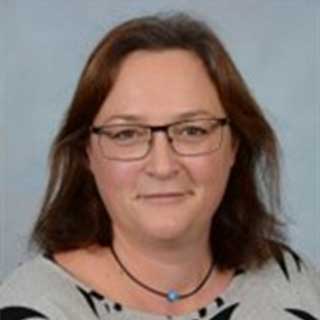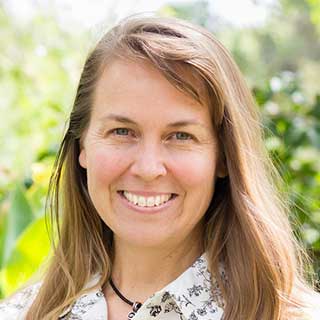Sequence 2: Cancer (target cells) ⟩ Module 1:
What is cancer?
The firts module within Sequence 2 focuses on defining cancer, and what cellular processes are altered to manifest cells as cancer cells (also known as target cells). It is possible that this module could take 2 hours of class time.
Summary
VCE Biology (2017-2021)
Unit 3, Area of Study 2, Outcome 2, VCE Biology Study Design
Key knowledge
Cellular signals
- apoptosis as a natural, regulatory process of programmed cell death, initiated after a cell receives a signal from inside (mitochondrial pathway) or from outside (death receptor pathway) the cell resulting in the removal of cells that are no longer needed or that may be a threat to an organism, mediated by enzymes (caspases) that cleave specific proteins in the cytoplasm or nucleus
- malfunctions in apoptosis that result in deviant cell behavior leading to diseases including cancer
Duration

Student learning outcomes
On completion of this module, students will:
- identify cancer as the progressive and uncontrolled growth of abnormal cells
- identify a mutation as a genetic modification to a cell’s DNA
- describe cancerous characteristics such as increased cell replication and a decrease in cell death
- outline the process of programmed cell death (apoptosis)
- identify how cancer cells have mutated to avoid apoptosis
Teacher background information
Module description
Cancer is a topic that is featured significantly in scientific research and the media. The detection of cancer in people has increased; and it is very likely that students may have had a family member touched by cancer. Whether they have heard or experienced the term, there is still the likelihood they have a limited understanding on the basic cell biology of cancer itself.
In this module, we introduce the concept that normal cells have a capacity to undergo genetic mutations which alter a cell’s natural biological processes. Cancer is the term used to describe a large group of diseases characterized by the progressive and uncontrolled growth of abnormal cells.
Students are then introduced to some of the factors that change normal cell behaviors to represent the ‘progressive and uncontrolled growth’ in cancer. These include genetic mutations, which lead to an increase in cell replication and malfunctions in apoptosis, the process of programmed cell death that helps maintain a consistent amount of healthy cells in our body.
Additional introductory resources
Document (MSWord)
Signalling molecules, signal transduction and its application in coordination and regulation (VCAA)
This document provides a couple of brief paragraphs about cancer and how cancerous cells can influence the signaling pathway in processes such as apoptosis.
Teaching sequence
Part 1 Identifying the characteristics of cancer

Student knowledge/ skills outcome:
- identify cancer as the progressive and uncontrolled growth of abnormal cells
- identify a mutation as a genetic modification to a cell’s DNA
- describe cancerous characteristics such as increased cell replication and a decrease in cell death
Prior Knowledge: None required
Activities
Activity 1.1 - What do you know about cancer? (10 - 20 mins)
Use a number of quick and effective brainstorming-based activities to identify what students currently know about cancer. These brainstorming activities enable everyone’s ideas to be expressed and stimulates thought and creativity. The following activities are designed to elicit students’ pre-instructional understanding of cancer.
Options:
- KWL chart: Ask students to complete a KWL chart (What I already Know about cancer; What would I like to know; What I have learned). Column three is completed at the end of this module. This activity is designed to assist students in visualizing what they know about cancer.
- Whole class mind map (teacher-guided discussion)
- Small group discussions (followed by sharing their information to the rest of the class)
- Collating individual contributions (for classes where students may have a fear of saying the ‘wrong thing’, or where a teacher would like everyone to participate); a teacher can ask each student to write down his or her thoughts about cancer. The teacher then collects them and quickly organizes them into categories (or places them all up on the board and gets students to categorise them). The students go over the categories and discusses the similarities, differences, consistencies and inconsistencies.
Activity 1.2 - A webquest: What is Cancer? (1 – 2hrs)
This research-based activity is aimed at developing student understanding of the changes in cellular processes that result in cancer. Students are given a list of research questions to answer. Students evaluate the following range of visual and aural resources to source their information. Students are also encouraged to source additional information.
Educators can then select the option of how students demonstrate their understanding via a range of individual or group activities (An inquiry worksheet to be created, which includes an assessment rubric). It includes the following research questions:
- What is cancer? Summarise what you now know about cancer
- Describe/illustrate how cells become cancerous
- List the similarities and differences between normal and cancerous cells (provide a VENN diagram to complete)
- Explain the process of metastasis
- With some cancer treatments, a tumor can shrink but not disappear. Explain why?
Students can demonstrate their understanding via individual responses such as a:
- Question and Answer activity sheet
- Visual representation (such as a flow diagram/ timeline etc…)
or could be in a group-based activity such as:
- A role play (mock interview with a scientist)
- Group presentation (oral with digital visual presentation such as Power Point or Prezi)
Students are provided with the following online resources as part of a mini webquest:
Video
Animated introduction to Cancer (12:07)
This video is an excellent animation teaching the basics of how cancer forms and spreads. Topics include: mutation, tumor suppressors, oncogenes, angiogenesis, apoptosis, metastasis and drug resistance.
Video
Cancer, How Cancer Starts, How Cancer Spreads, Where and Why, Animation (3:57)
The number of cells in a tissue is determined by the balance between cell division and cell death. This video describes how uncontrollable cell division leads to formation of abnormal growths known as tumors.
Website
Cancer Research UK: What is Cancer?
Students are able to investigate how cancer starts, grows and spreads using a range of online written and visual information provided by Cancer Research UK. Students can test their knowledge using the online cancer quiz.
Article
Normal Controls on Cell Division are lost during Cancer
Students are able to read about cancer cell biology, answering the following questions:
- How Do Cancer Cells Differ from Normal Cells?
- How Do Cancerous Changes Arise?
- How Do Cancer Cells Spread to Other Tissues?
Note: Additional information can be found in the teacher resources download.
Part 2 Apoptosis: Cancer…cheating death?

Student knowledge/ skills outcome:
- outline the process of programmed cell death (apoptosis)
- identify how cancer cells have mutated to avoid apoptosis
Activities
Background and resources
Book excerpt
Cell suicide: apoptosis (pp. 284 – 285), Evans et al. 2012, Heinemann Biology 2, 4th edition
An outline of apoptosis by Dr David Vaux, the medical research scientist who identified the gene bcl-2 that prevents cell death (apoptosis) by stopping caspases (enzymes that digest the cell) from activating. The bcl-2 gene is present in cancer cells.
Website
Cell death
This page on the Walter+Eliza Hall Institute of Medical Research website details cell death.
Video
Introduction to Cancer Biology (Part 2): Loss of Apoptosis (4:15)
Loss of apoptosis is one of the key mechanisms behind cancer. The following video explains both the extrinsic (death receptor) and intrinsic (mitochondrial) pathways of apoptosis. This animation is the second part of the series "An Introduction to Cancer Biology", and reveals the faulty apoptotic pathways that tumor cells often have.
Activity 1.3 - Role Play: How do cancer cells evade death?
Students investigate the process of apoptosis and the ways in which cancer cells mutate to prevent programmed cell death.
Within a role play environment, students create a number of questions and answers that explain the role and function of apoptosis and how mutations stop apoptosis, contributing to the rapidly expanding number of cancers cells that develop into tumors. All students research and prepare questions and answers.
Some questions could be:
- What is a genetic mutation?
- Can you explain how cancer cells grow into tumors
- Why do cancer cells grow quickly?
- What is apoptosis and explain why cancer cells avoid this process?
(I’d prefer to encourage students to create their own question/answers)
The role plays, focusing on students being ‘scientific researchers’ can be implemented using a number of different strategies:
- Mantle of the expert – Where students become the experts and the teacher guides them through a role play. The scenario could be a science forum where they (a panel of scientists) are posed the discussion question of ‘What is apoptosis, and how does cancer evade apoptosis?’
- Hot Seating (whole class)- A widely used and very effective Drama strategy. Questions are asked to someone sitting in the 'hot-seat' who answers in character (an immunologist). Set this up by telling the class they will have an opportunity to pose questions to the immunologist based on their prior research.
- Hot seating (in pairs) – Using the same methodology above, students can either present their role plays live in class, or video tape them for viewing by the class or just the teacher. An activity handout and rubric will need to be developed. This activity lends itself for peer or self-assessment.
Next module: Monoclonal antibodies and cancer treatment
 Contemporary VCE Biology
Contemporary VCE Biology

